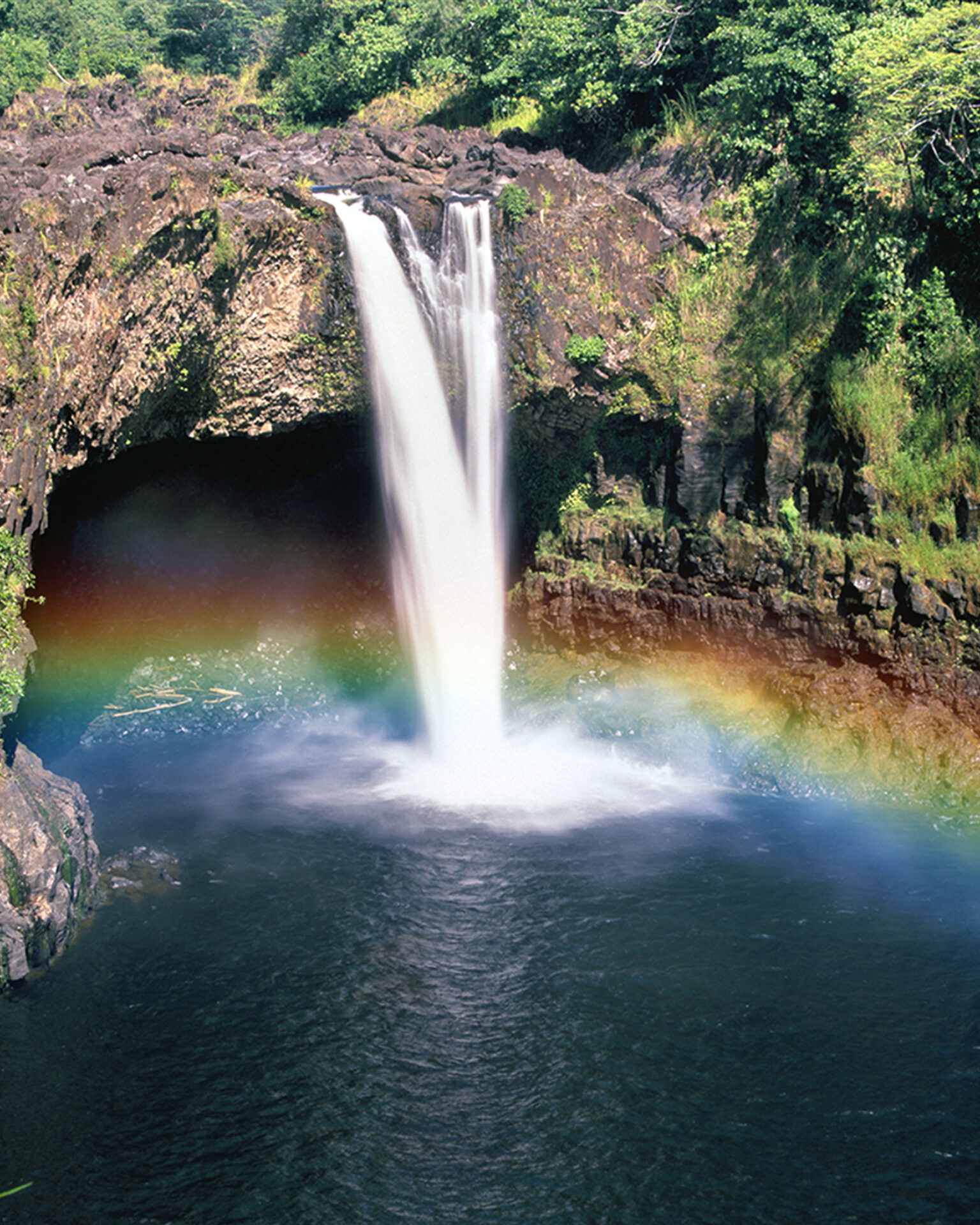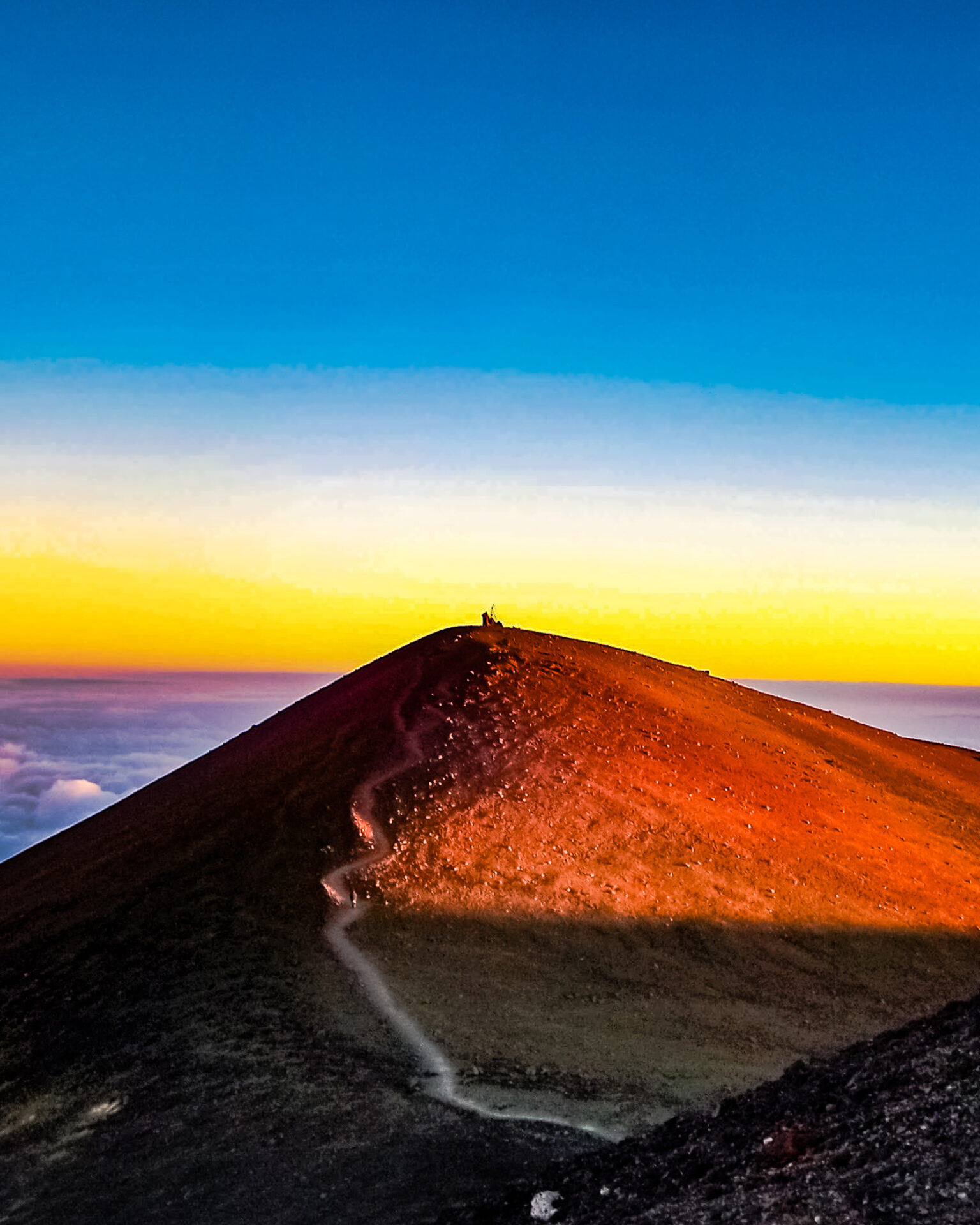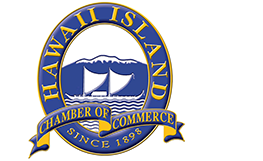Visitor Information
Deepest mahalo to the Hawai‘i Tourism Authority for providing content for parts of this section.*
About Hawai`i Island*
About Hawai`i Island*
TAKE THE PONO PLEDGE TODAY
The island of Hawaii is the youngest and largest island in the Hawaiian chain.
Nearly twice as big as all of the other Hawaiian Islands combined (hence, its nickname, “Big Island”), its sheer size is awe-inspiring. You can travel through all but four of the world’s different climate zones here, ranging from Wet Tropical to Polar Tundra, a result of the shielding effect and elevations of the massive volcanoes Maunakea and Maunaloa. From the many geological features at Hawaii Volcanoes National Park to the snow-capped heights of Maunakea; from the lush valleys of the Hilo and Hamakua Coasts to the jet-black sands of Punaluu Beach, the island of Hawaii is an unrivaled expression of the power of nature. However you decide to experience the island, it is sure to leave you humbled! Check out the island of Hawaii’s regions to explore this vast island.

Rainbow Falls (Waiānuenue) in Hilo
Relocation Information
Relocation Information
Printed relocation information is available and will be mailed to you upon request for $20.00 to cover postage and handling. Check, money order or credit card payments accepted. The USPS medium size flat rate box to ship the order will include a current copy of our local phone book, current publication of the East Hawai‘i newspaper, Hawai‘i Tribune-Herald and other information to help you in the relocation process. Feel free to inquire about any specific information you may require.
Contact the Chamber office at Ph: 808-935-7178 or email admin@hicc.biz.
Web links are also available as an inexpensive option which the chamber office will be happy to provide at no charge.
Email admin@hicc.biz with your request.

Beautiful spinner dolphins near the Big Island, Hawaii
Travel Information*
Travel Information*
Useful Phone Numbers:
The area code for the state of Hawaii is (808)
The Island of Hawaii Visitors Bureau:
(808) 885-1655
Agricultural Inspection:
(808) 326-1252 (Kona), (808) 933-9040 (Hilo)
Airport Visitor Information:
(808) 329-3423 (Kona), (808) 961-9322 (Hilo)
Camping Permits:
(808) 961-8311 (County of Hawai‘i)
(808) 961-9530 (State of Hawai‘i)
(808) 985-6000 (Volcanoes National Park)
Hawaii County Mass Transit Hele On Bus:
(808) 961-8744
(808) 974-4700 Hilo Medical Center
(808) 932-4200 Kau Hospital
(808) 322-9311 Kona Community Hospital
(808) 885-4444 North Hawaii Community Hospital (Waimea)
Marriage License:
(808) 974-6008
Volcano Activity:
(808) 985-6000
Island of Hawai‘i
Island of Hawai‘i
Maps & Geography
Maps & Geography
The island of Hawai‘i is the largest island in the Hawaiian chain
with climatic contrasts across its 6 main regions: the Hamakua Coast, Hilo, Puna, Kau, Kona and Kohala. The island is 4,028 sq. miles, which is so big that the other Hawaiian Islands could fit on it nearly twice. Yet the island of Hawai‘i is the youngest in the Hawaiian chain, a mere 800,000 years old.
The island is home to Maunakea which is the tallest sea mountain in the world, with a summit that stands 13,796 feet above sea level, and rises over 32,000 feet from its base on the ocean floor, making it taller than Mt. Everest. Maunaloa is the most massive mountain in the world, covering half the island. But the island of Hawaii is most famous for Kilauea in Hawaii Volcanoes National Park, one of the world’s most active volcanoes, erupting continuously since 1983.
The lush east-side town of Hilo gets more than 130 inches of rain annually, while the Kohala Coast usually gets less than ten inches per year. Ranging from the fern forests of Puna and the cool, misty breezes of Waimea, to the sunny lava plains of Kona and the dry heat of Kau, the island of Hawai‘i is a place of stunningly distinct environments.

Mauna Kea Summit
Weather
Weather
Weather on all of the Hawaiian Islands is consistent, offering only minor changes in temperature throughout the year. There are really only two seasons: the summer months that extend from May to October and the winter months that run from November to April.
Island of Hawai‘i Beaches*
Island of Hawai‘i Beaches*
The island of Hawai‘i features some of the most picturesque and varied beach landscapes in the world. From white sand, to black sand beaches (and a few other colors in-between), visitors can see first-hand how volcanic activity has shaped and influenced the beauty of Hawaii. From beautiful resort beaches, to rugged, off-the-beaten-path sands that are wild, remote and rewarding — there is much to explore.
Please note: Hawai‘i’s ocean and beach conditions are as unique as the islands themselves. Visit HIOCEANSAFETY.COM which constantly monitors the surf, wind, and reports from public safety officials that directly affect the conditions for safety of Hawaiian beaches. Use the hazard signs on HIOCEANSAFETY.COM as well to quickly assess conditions and help you find the appropriate beach for your visit.
Hilo & East Hawai`i*
Hilo & East Hawai`i*
Located on the northeastern side of the island of Hawaii, Hilo offers breathtaking natural beauty plus all the amenities of a vibrant town. On the geographic flipside of the volcanic Kohala Coast, the region is blessed with dramatic waterfalls, fertile rainforests and blooming gardens. It’s also home to Hilo International Airport and is a convenient stop on your way to Hawaii Volcanoes National Park, located 45 minutes south.
A busy farming and fishing area in early times, Hilo evolved into a commercial center for the sugar industry in the 1800s. Downtown Hilo was built around its crescent-shaped bay and became the seat of county government. Today, Downtown Hilo is a charming town offering museums, art galleries, shops and restaurants.
Resident & Visitor Attractions*



